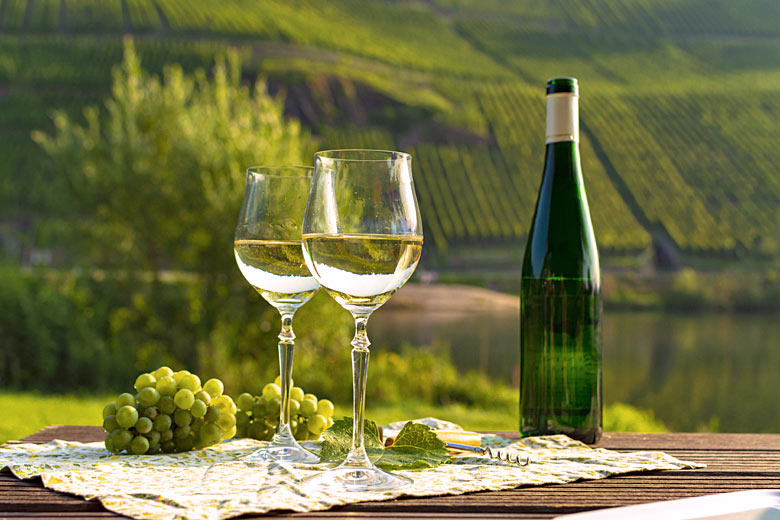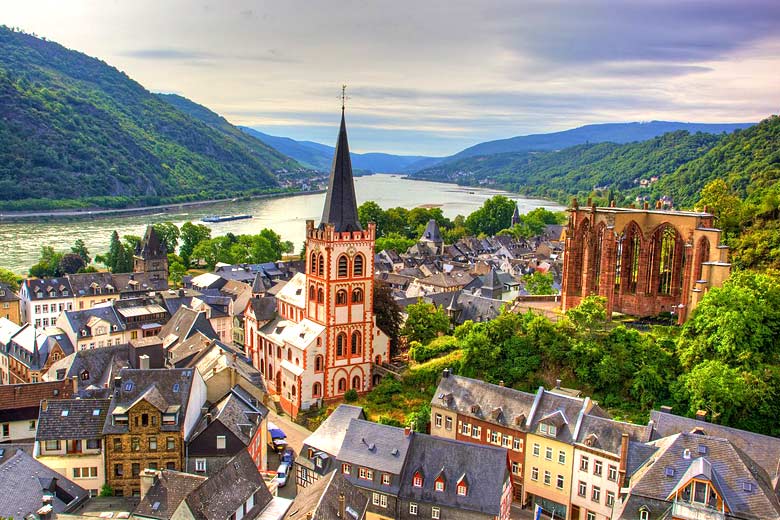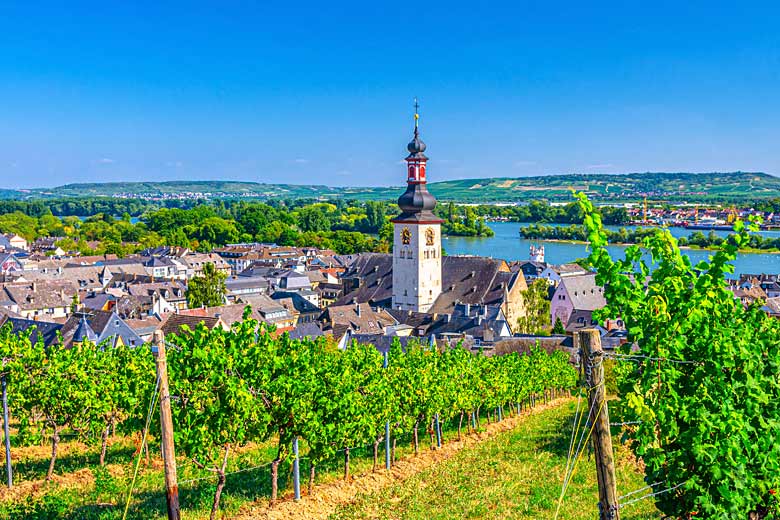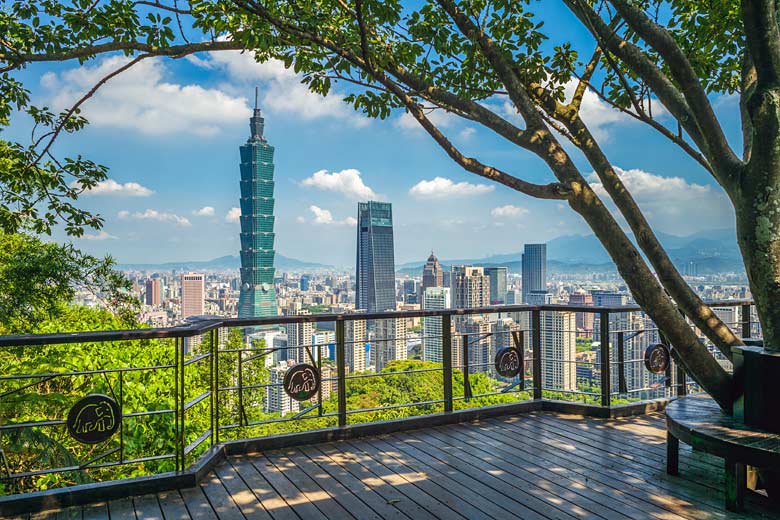Where to go in Germany's romantic Rhine Valley
The Rhine Valley, also known as the Rhine Gorge and Upper Middle Rhine Valley, is a 65 km (40-mile) sweep of the River Rhine. Although much of this stretch through western Germany is enchanting, it's arguably at its best between the towns of Bingen and Koblenz.

Dotted with castles and pretty walled towns, hemmed by steep-sided hills planted with vines and rich with legends, the landscape has long exerted influence over creative souls.
Painters and poets aligned with the German Romantic movement, more than two centuries ago, were among the first to find inspiration in the scenery of the region.
The 65 km (40-mile) stretch of water, an artery of trade for centuries, was guarded by 40 fortresses in medieval times. The war and time-worn ruins of those once-formidable castles were reconstructed as Germany's sense of nationhood grew during the 19th century.
River cruises, cycling trips and hiking expeditions are just three ways of exploring this scenic swathe of Germany. Here's a look at some of the many places to visit and things to do in the Rhine Gorge.
Getting to the Rhine Valley: undoubtedly, one of the best ways of experiencing the valley is by boat. Check out the latest offers on Rhine cruises from TUI*, which hosts a variety of other river cruise itineraries across Europe*.
Castles of the Rhineland
The concentration of castles along this stretch of the Rhine is a key aspect of this UNESCO-designated landscape's allure.
One of the most striking hilltop fortresses is Marksburg Castle, whose history traces to the early 12th century.
Rising over half-timbered buildings in the attractive walled town of Braubach, Marksburg is notable for its keep and curtain walls from the Late Middle Ages. Open to visitors, this imposing landmark is a former prison and, coincidentally, the headquarters of the German Castles Association.

Offering commanding views over the river and nearby vineyards, Sooneck Castle is a fine example of a medieval stronghold reconstructed in the 19th century.
Self-guided tours are a way of viewing towers, turrets and battlements built on the orders of Prussian royalty long after their destruction by Louis XIV of France's troops.
Dominating high ground above St Goar, Rheinfels Castle is the region's largest medieval stronghold. Now partially ruined, the fortress withstood a 28,000-strong French army in 1797.
Discover the castle's history at the museum in the converted chapel. Stay onsite in the hotel whose wellness area includes a sauna with panoramic views and a fitness room dubbed 'the torture chamber'.
Wine tasting
Some of the world's finest white wines are produced in the Rhine Valley. Riesling from Hochheim, 35 km (21 miles) east of Rudesheim, was famously one of Queen Victoria's favourite tipples.
Prior to WWI, vintages crafted on German wine estates were among the world's most expensive. The armed conflict caused the market, though not production, to dry up.

Crisp, characterful wines made from Riesling grapes and fruity, easy-to-drink wine made from the Müller-Thurgau variety are commonly served in the region's pubs and bars.
The term Weingut may sound like a stomach protruding because of too much wine but translates as 'winery'. Hillsides on either side of the waterway are dotted with vineyards.
During summer, look out for the hospitality of Strausswirtschaften, a term that doesn't readily translate. Brooms displayed outside wine cellars indicate the availability of homestyle cooking and wine.
Gain an appreciation of the region's wines by sampling produce. Bingen's Weingut Drei Koenigshof, Kaub's Weingut Loewenkopf and the Sennerhof on the Rieslingstrasse (meaning 'Riesling Road') above Oberwesel* are just three of many places worth visiting.
Hiking & cycling
The hillsides of the Rhine Valley warrant climbing for their fine views of the waterway below. Whether hiking or biking, you can pause to explore natural landmarks such as the Lorelei, an outcrop of rock topped by an outdoor theatre constructed in the 1930s.
The Rhine Cycle Route, one of Europe's long-distance cycleways, skirts alongside the river. It would be easy to pedal through the region in an afternoon. Instead, allow several days.

That gives time to appreciate timber-framed façades in towns such as Bacharach, whose medieval tower, the Postenturm, offers fine views.
Left or right? That's a key consideration when hiking in the Rhine Valley. Whichever side of the river you choose, be prepared for steep inclines and panoramic views.On the right bank, you'll find the long-distance footpath known as the Rheinsteig. Most walkers complete it over eight days.
Meanwhile, the eight sections of the Rhine Castles Trail are on the left bank. With its Roman heritage and many grand buildings, Boppard*, between Rhens and Bad Salzig, warrants a day in its own right.
The Rhine in Flames
The Rhine in Flames is a spectacle held after nightfall on select evenings from May into September.
Late in the afternoon, anticipation builds as passenger ships gather into a convoy. Illuminated by colourful lights, the vessels travel in unison along the waterway. Their decks are optimal for viewing fireworks reflecting on the river's surface as they arch and burst above the Rhine.
Bengal fire glowing red and green illuminates the walls of castles and other landmarks in the valley. Smoke drifting amid shimmering light conjures a sense of drama in the landscape whose soul drew wonderment from German Romantics.
On land, a programme of live music entertains visitors while stalls offer local delicacies and regional wine, helping fuel the festive atmosphere.
Historic centres
You'll find 60 towns and villages dripping with historic intrigue between Bingen and Koblenz.
The slender Mouse Tower on the islet by Bingen is one of the region's most readily identifiable landmarks. The legend behind its naming tells how the cruel local ruler, Archbishop Hatto II, retreated to it after murdering peasants. Mice reputedly swarmed across the water and ate him alive.

Rüdesheim*, on the opposite bank, is renowned for the wrought-iron signs of the Drosselgasse, a much-photographed lane. A cable car soars above one of the region's vineyards on the way to the Niederwald Monument, a commemoration of German unification in 1871.
Strolling in Koblenz*'s Old Town brings a chance to view the vast equestrian monument, dedicated to the Prussian Emperor Wilhelm, where the Moselle flows into the Rhine. Board a cable car and cross the Rhine to visit Ehrenbreitstein Fortress and the museums within.
Weather in the Rhine Valley
| Jan | Feb | Mar | Apr | May | Jun | Jul | Aug | Sep | Oct | Nov | Dec | |
|---|---|---|---|---|---|---|---|---|---|---|---|---|
| Maximum daytime temperature °C |  2 2 |
 5 5 |
 9 9 |
 14 14 |
 19 19 |
 22 22 |
 24 24 |
 23 23 |
 20 20 |
 14 14 |
 8 8 |
 3 3 |
| Hours of sunshine (daily) | ||||||||||||
| Days with some rainfall |  16 16 |
 13 13 |
 14 14 |
 14 14 |
 15 15 |
 15 15 |
 14 14 |
 14 14 |
 12 12 |
 12 12 |
 14 14 |
 16 16 |
Ready to discover the Rhine Gorge? Check out the latest offers on sailings and itineraries with TUI River Cruises.
More about Germany
- Overview
- Best time to visit
- Weather by month
- 5-day weather forecast
- Destinations
- Travel advice
- Deals & discounts
Germany by month
Jan Feb Mar Apr May Jun Jul Aug Sep Oct Nov Dec
Explore holidays in the sun for less
- Beach holidays
- Family holidays
- City breaks
- Summer holidays
- Winter sun holidays
- Holiday offers
- Top travel brands
- Airlines & flights
- Discount hotels
- Airport parking deals
- TUI
- Jet2holidays
- easyJet holidays
- Love Holidays
- January sales
Airport parking
- Manchester Airport
- Stansted Airport
- Bristol Airport
- Luton Airport
- Birmingham Airport
- Edinburgh Airport
- Gatwick Airport
- Glasgow Airport
- Newcastle Airport
Airport lounges
- Manchester Airport
- Birmingham Airport
- Bristol Airport
- Edinburgh Airport
- Glasgow Airport
- Heathrow Airport
- Newcastle Airport
- Stansted Airport
- Gatwick Airport
Be inspired
Get your weekly fix of holiday inspiration from some of the world's best travel writers plus save on your next trip with the latest exclusive offers
We promise not to share your details



















